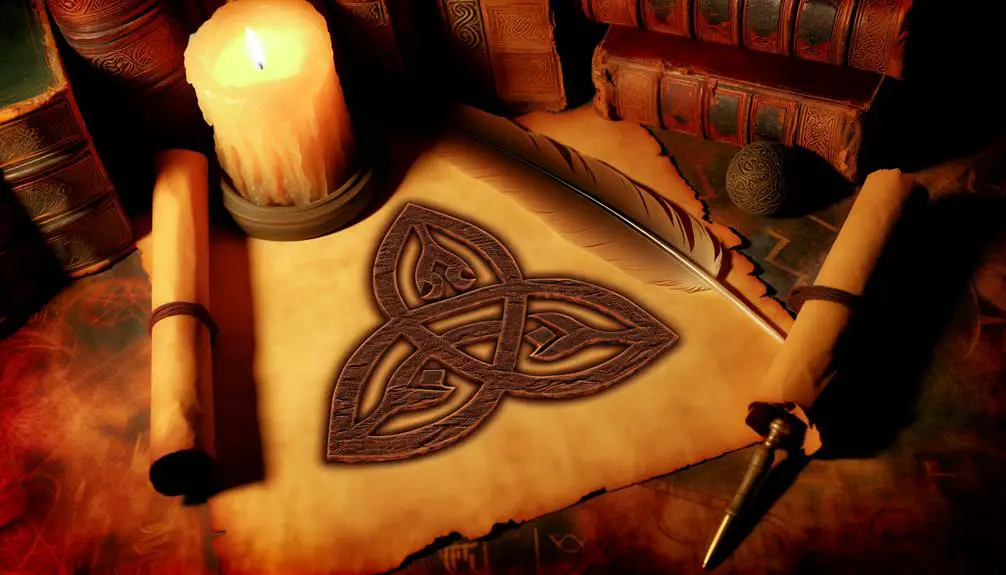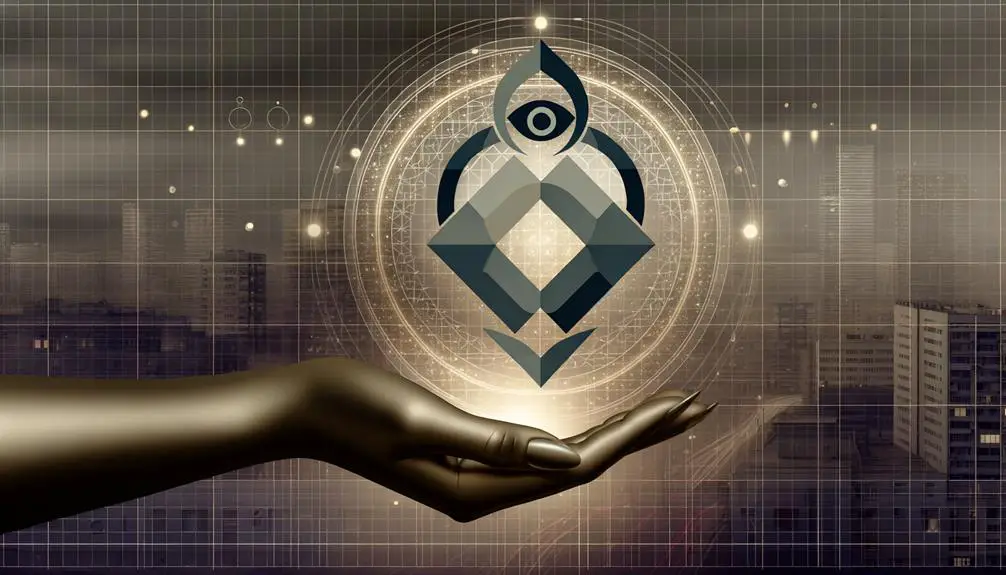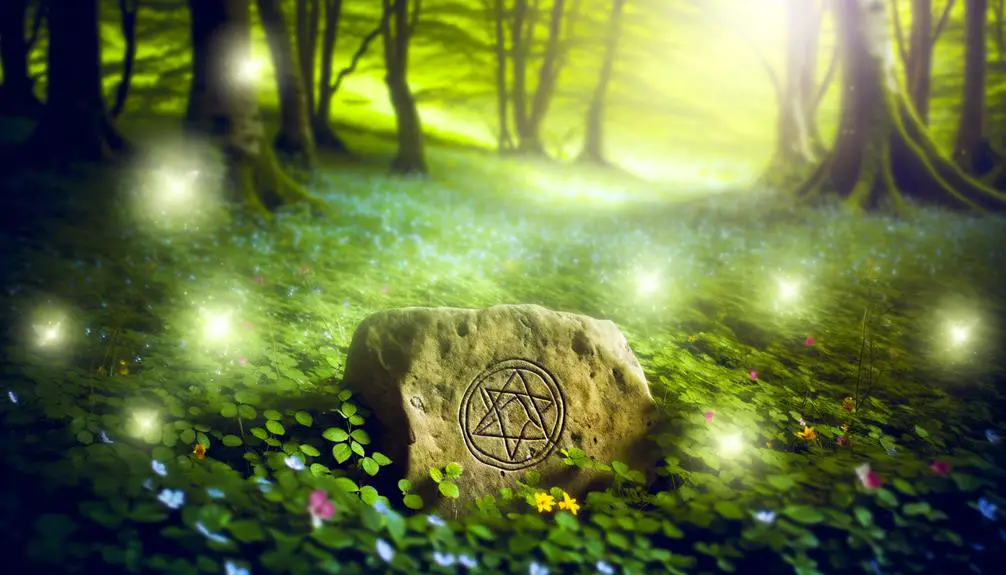How to Understand the Meaning of Charmed Symbols
The charmed symbol, historically significant, has origins in ancient Mesopotamian, Egyptian, Greek, and Roman cultures. These symbols were intricately crafted and valued for their protective qualities.
Culturally, the charmed symbol embodies protection, personal transformation, and interconnectedness, with layered meanings that vary globally—from harmony in Asian cultures to ancestral connections in indigenous societies. Modern usage spans from fashion and digital icons to branding, demonstrating its adaptability.
Personal connections imbue these symbols with unique meanings tied to individual experiences, memories, and aspirations. Each symbol's journey enriches one's identity, hinting at an elaborate heritage and contemporary relevance.
Discovering its historical context and personal significance reveals more.
Key Takeaways
- Charmed symbols historically offer protection and ward off negative influences.
- They signify personal growth and transformation, reflecting metamorphosis.
- Symbols represent interconnectedness, emphasizing unity and interwoven existence.
- Modern usage includes fashion, branding, and digital communication, showcasing their versatility.
- Personal significance of charmed symbols encompasses memories, cultural heritage, and aspirations.
Historical Origins

The historical origins of the charmed symbol can be traced back to ancient civilizations, where it was often imbued with mystical significance and utilized in various cultural rituals.
In Mesopotamia, amulets featuring charmed symbols were believed to offer protection against evil spirits. Similarly, ancient Egyptians used hieroglyphic charms to invoke the favor of deities, ensuring prosperity and health. The Greeks and Romans also adopted these symbols, incorporating them into their daily lives and religious practices.
Such uses underscore the symbol's perceived power to influence the supernatural. Archaeological findings reveal that these symbols were meticulously crafted, often from precious materials, highlighting their esteemed value.
This historical context provides a foundational understanding of the charmed symbol's enduring legacy.
Cultural Interpretations

Cultural interpretations of the charmed symbol reveal a rich tapestry of meanings that vary substantially across different societies, reflecting each culture's unique beliefs, values, and traditions.
This diversity can be seen through various lenses:
- Eastern Philosophies: In many Asian cultures, the charmed symbol is often intertwined with concepts of balance, harmony, and the cyclical nature of life.
- Western Traditions: In European contexts, it frequently symbolizes protection and good fortune, rooted in medieval folklore and mythology.
- Indigenous Cultures: For numerous indigenous communities, the symbol represents a deep connection to nature and ancestral spirits.
- Modern Interpretations: Contemporary views often blend traditional meanings with new-age spirituality, emphasizing personal empowerment and positive energy.
These interpretations highlight the symbol's adaptability and enduring relevance across cultures.
Symbolic Meanings

Symbolic meanings of the charmed symbol explore into its intricate layers, revealing themes of protection, transformation, and interconnectedness that resonate across various philosophical and spiritual domains.
Protection is a primary layer, where the symbol acts as a guardian against negative influences, safeguarding both physical and spiritual well-being.
Transformation is embodied through the symbol's ability to signify personal growth and metamorphosis, often seen in rites of passage or significant life changes.
Interconnectedness is highlighted by the symbol's representation of unity and the interwoven nature of existence, reflecting the universal truth that all beings and events are interlinked.
These symbolic meanings collectively enrich the charmed symbol, embedding it deeply within the tapestry of human experience and belief systems.
Modern Usage

In contemporary contexts, the charmed symbol has evolved to encompass a diverse array of applications, from personal adornments like jewelry to digital emblems within virtual communities, reflecting its enduring relevance and adaptability. This evolution can be observed through various modern usages:
- Jewelry and Fashion: Charmed symbols are prominently featured in necklaces, bracelets, and rings, often representing personal beliefs or milestones.
- Digital Icons and Emojis: In digital communication, charmed symbols are used to convey emotions, affiliations, or symbolic messages.
- Branding and Logos: Companies incorporate charmed symbols in logos to evoke specific values or cultural connections.
- Art and Design: Contemporary artists and designers utilize charmed symbols to imbue their work with layers of meaning and historical resonance.
These examples demonstrate the symbol's versatility and continued cultural significance.
Personal Connections

For many individuals, the charmed symbol holds profound personal significance, often representing cherished memories, deep-rooted beliefs, or pivotal life experiences. These symbols can serve as tangible reminders of one's cultural heritage, spiritual journey, or personal milestones.
They might commemorate a loved one, symbolize a battle overcome, or embody aspirations and values. Each charm's meaning is intensely personal, shaped by individual context and interpretation. This intrinsic connection enriches the symbol's value, transforming it from a mere object into a potent emblem of identity and experience.
The intersection of personal history and symbolic representation allows these charms to function as both intimate keepsakes and powerful tools for self-expression and reflection.
Conclusion
In summation, the charmed symbol's evolution from its historical origins to its modern usage demonstrates the adage, 'A picture is worth a thousand words.'
It encapsulates diverse cultural interpretations, multifaceted symbolic meanings, and enduring personal connections.
Analyzing its significance reveals a rich tapestry of human experience, where ancient wisdom converges with contemporary contexts, offering profound insights into collective and individual identities.
The charmed symbol hence remains a potent emblem of continuity and change in human society.






